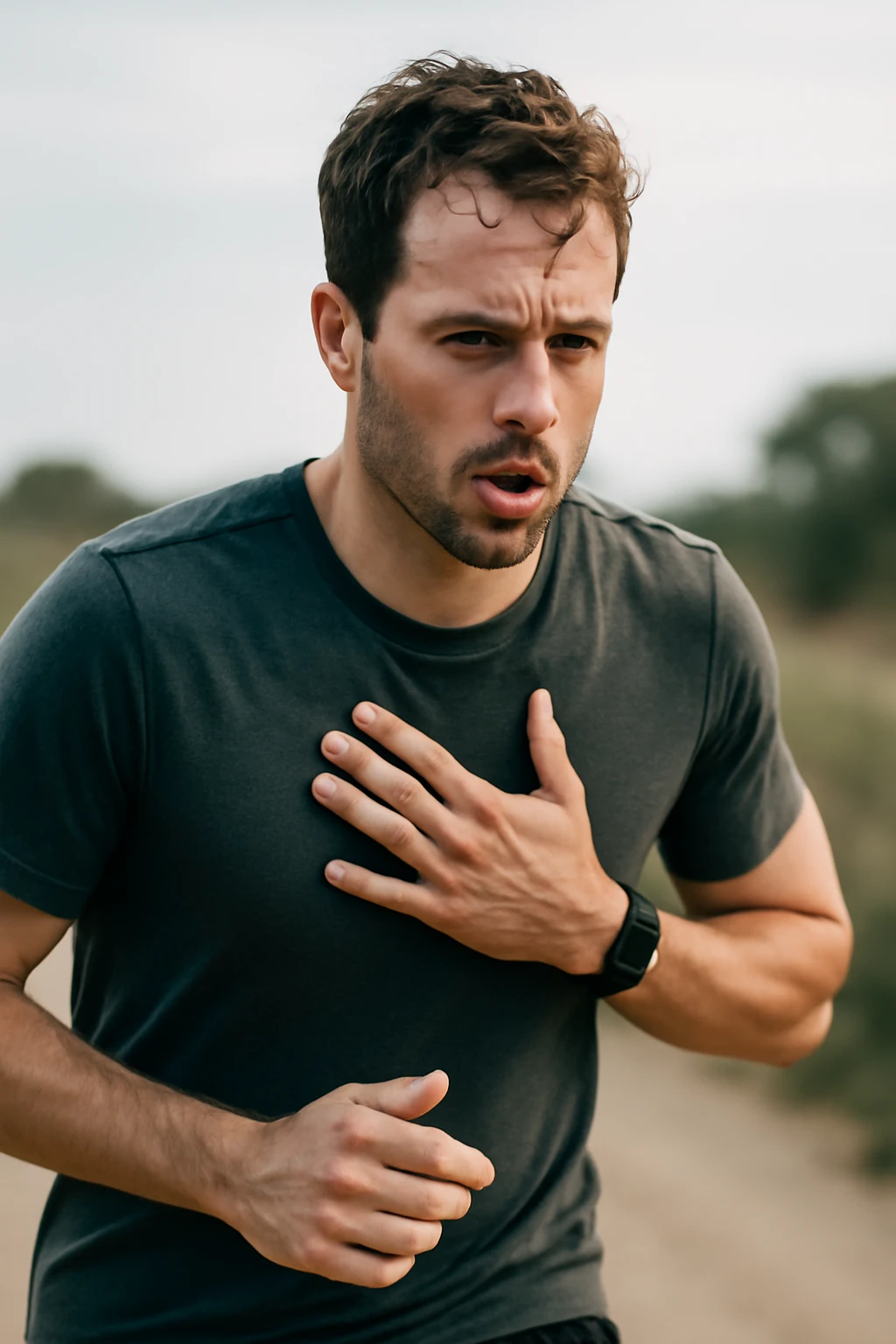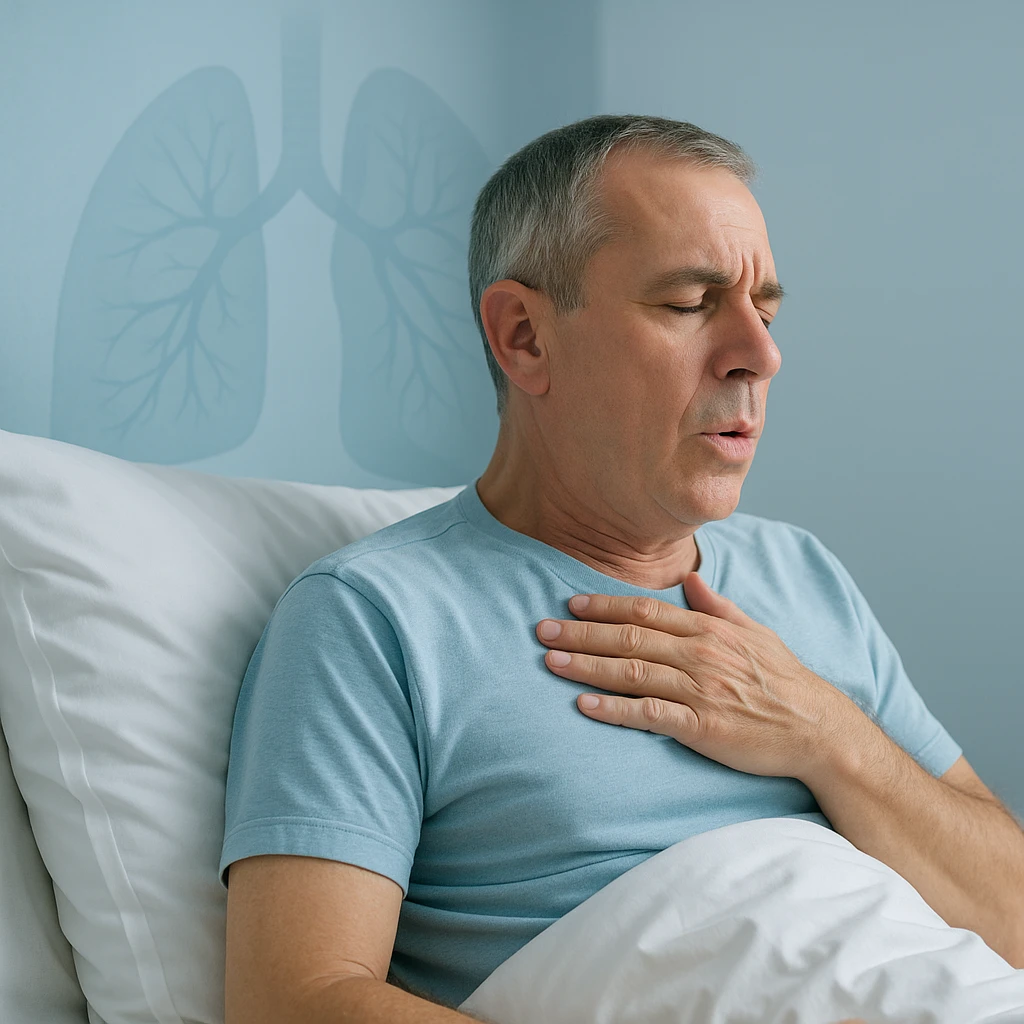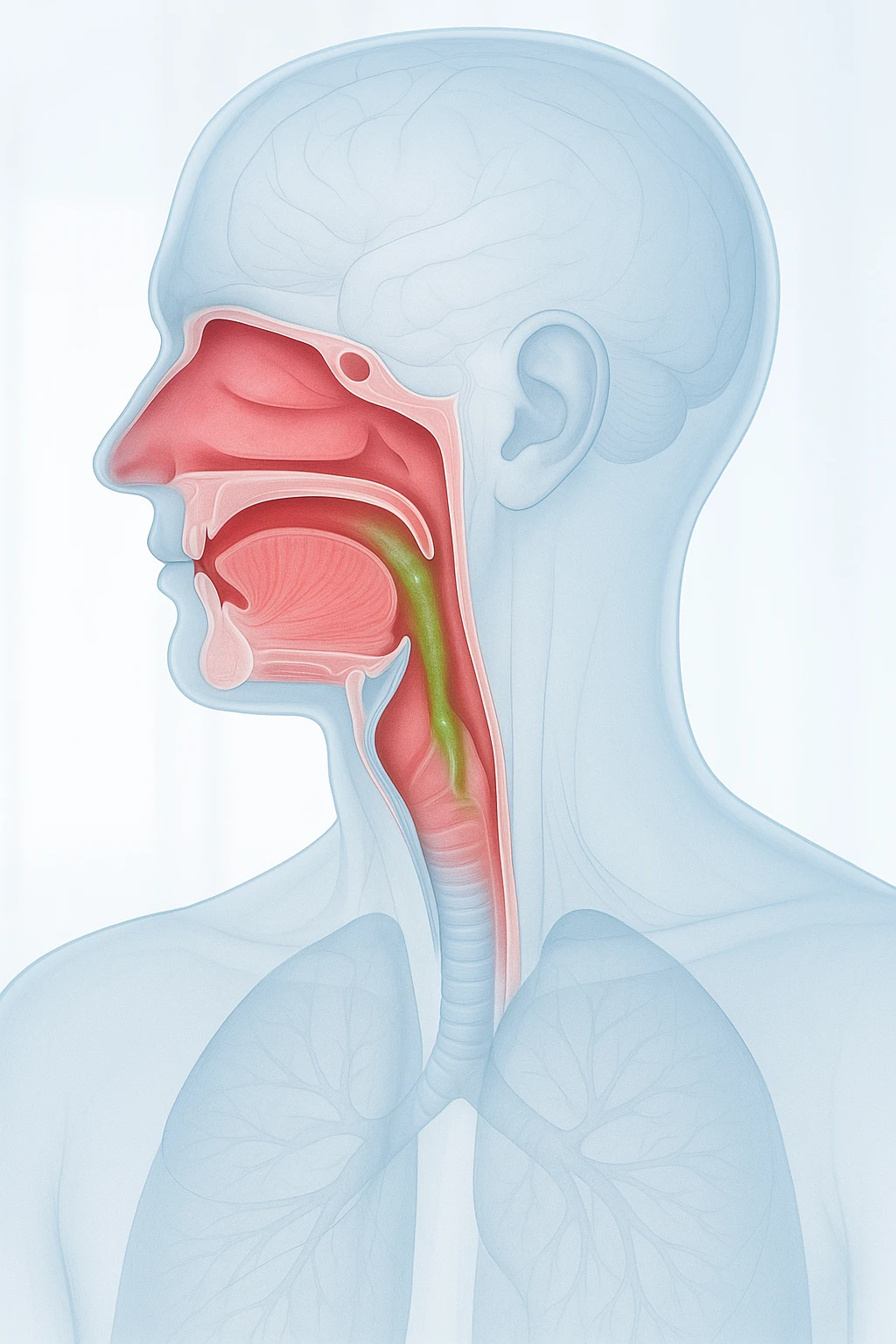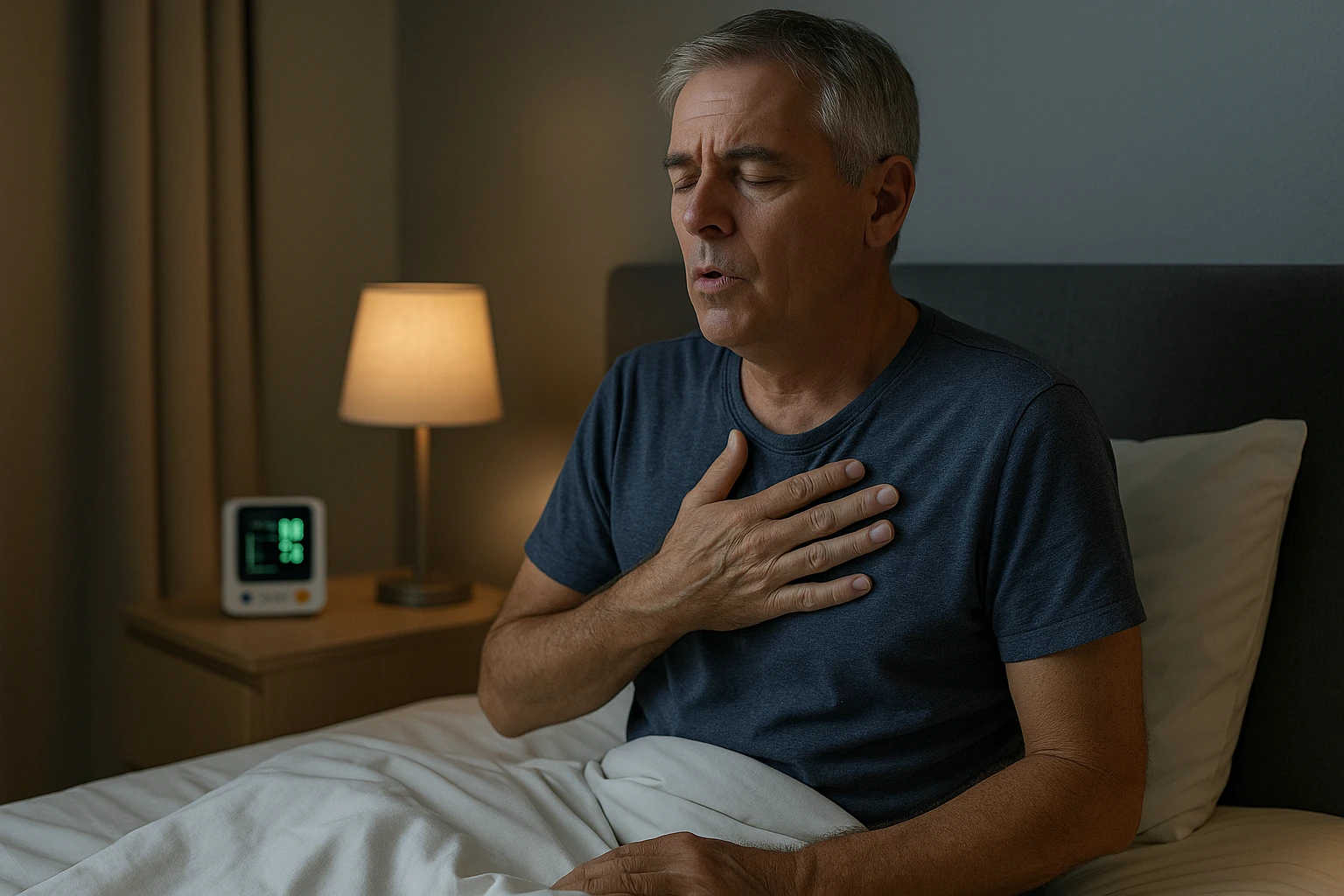How to Diagnose and Treat Difficulty Breathing After Running
Difficulty Breathing After Running: Causes and Insights
Difficulty breathing after running is a common issue for many individuals, affecting their ability to continue exercising or perform at their best. For some, the experience is brief and mild, while for others, it can be a recurring problem that hinders physical activity. Two primary conditions, exercise-induced bronchoconstriction (EIB) and exercise-induced laryngeal obstruction (EILO), are often responsible for these breathing challenges.
EIB causes transient airway narrowing during or after physical activity, leading to shortness of breath, wheezing, and coughing. It affects up to 20% of the general population, including people without asthma. On the other hand, EILO occurs due to temporary obstruction of the airway caused by adduction of the laryngeal structures during exercise, which can also cause breathing difficulty. Both conditions can significantly impact exercise performance and quality of life, especially for those who enjoy running and other strenuous activities.
Key Differences Between EIB and EILO
- EIB: Causes airway narrowing, often seen in individuals with asthma, affecting up to 20% of the general population.
- EILO: Results from transient obstruction of the airway due to laryngeal adduction, commonly affecting athletes.
Common Causes of Difficulty Breathing After Running
Difficulty breathing after running can be caused by several underlying conditions. The two primary conditions associated with this issue are exercise-induced bronchoconstriction (EIB) and exercise-induced laryngeal obstruction (EILO). Both conditions lead to impaired airflow during or after physical exertion but have different underlying mechanisms. While these are the most frequent causes, less common conditions, including cardiovascular issues, can also contribute to breathing difficulties during or after running.
Exercise-Induced Bronchoconstriction (EIB)
EIB refers to the temporary narrowing of the airways during or shortly after physical activity, which can affect up to 20% of the general population, including individuals without asthma. It is commonly triggered by intense or prolonged physical exertion, particularly in cold or dry air, leading to symptoms like shortness of breath, wheezing, and coughing. Diagnosis of EIB typically requires objective testing, such as exercise challenge tests or eucapnic voluntary hyperpnea, to confirm airway narrowing.
Exercise-Induced Laryngeal Obstruction (EILO)
EILO occurs when the laryngeal structures temporarily adduct during physical exertion, causing a narrowing of the airway. This obstruction leads to difficulty breathing, especially during inhalation. Unlike EIB, which affects the lower airways, EILO primarily impacts the upper airway. EILO is more commonly seen in athletes and can significantly impair performance. The condition is diagnosed using continuous laryngoscopy during exercise, which allows healthcare providers to observe the transient obstruction.
Other Potential Causes
In addition to EIB and EILO, cardiovascular issues, such as heart problems, can occasionally cause difficulty breathing during physical exertion. These conditions typically present with additional symptoms, such as chest pain or palpitations, and require a different diagnostic approach. If breathing difficulties are accompanied by such symptoms, further evaluation is needed to rule out cardiovascular causes.
Diagnosing Breathing Issues After Exercise
Accurately diagnosing the cause of difficulty breathing after running requires a comprehensive approach that includes a detailed patient history, clinical examination, and objective testing. Differentiating between conditions like exercise-induced bronchoconstriction (EIB), exercise-induced laryngeal obstruction (EILO), and other potential causes of dyspnea is crucial for effective management and treatment.
History and Clinical Examination
A thorough patient history is essential for diagnosing exercise-induced dyspnea. Clinicians should ask about the onset, duration, and severity of symptoms, as well as any relevant medical history, including asthma or other respiratory conditions. Environmental factors, such as temperature and humidity, may also offer important diagnostic clues. A physical examination helps to identify signs of airway obstruction or related symptoms, such as wheezing or stridor, guiding the next steps for diagnostic testing.
Diagnostic Testing
To confirm a diagnosis of EIB or EILO, objective testing is crucial. For EIB, exercise challenge tests or eucapnic voluntary hyperpnea are commonly used to measure changes in airway function during or after physical exertion. EILO is diagnosed using continuous laryngoscopy during exercise, which allows clinicians to directly observe the transient airway obstruction. Cardiopulmonary testing may also be performed to exclude other potential causes of dyspnea, such as cardiovascular issues.
Treatment and Management of Breathing Difficulties After Running
Effectively managing breathing difficulties after running requires an individualized approach, focusing on the underlying condition causing the symptoms. Two primary causes—exercise-induced bronchoconstriction (EIB) and exercise-induced laryngeal obstruction (EILO)—require different treatment strategies. Management options include both pharmacologic and non-pharmacologic interventions to help individuals reduce symptoms and maintain their ability to exercise.
Management of Exercise-Induced Bronchoconstriction (EIB)
The management of EIB involves pharmacologic treatments aimed at reducing airway narrowing and inflammation. Short-acting β-agonists provide rapid relief by relaxing airway muscles. Inhaled corticosteroids reduce chronic inflammation, while leukotriene receptor antagonists and mast cell stabilizers are also helpful for frequent EIB episodes. These medications help improve exercise tolerance and quality of life based on the frequency and severity of symptoms.
Management of Exercise-Induced Laryngeal Obstruction (EILO)
For EILO, treatment typically involves behavioral techniques to modify breathing patterns. Controlled breathing exercises, such as pursed-lip or diaphragmatic breathing, help prevent airway constriction during exertion. Speech therapy is beneficial for athletes, helping them manage symptoms during physical activity. In more severe cases, surgery may be considered for individuals whose symptoms do not respond to conservative treatments.
General Recommendations for All Athletes
Regardless of the underlying cause of dyspnea, general management strategies can help athletes reduce symptom frequency and severity. These include adjusting training intensity, modifying environmental factors (e.g., avoiding extreme temperatures or high humidity), and ensuring a proper warm-up and cool-down routine. Regular monitoring and consistent medication regimens are essential for managing these conditions over time, allowing individuals to remain active and healthy.
Preventive Measures and Long-Term Outlook for Difficulty Breathing After Running
For individuals experiencing difficulty breathing after running, proactive management and preventive strategies are crucial for minimizing symptoms and improving long-term outcomes. Both exercise-induced bronchoconstriction (EIB) and exercise-induced laryngeal obstruction (EILO) can be effectively managed through the right lifestyle modifications, training adjustments, and medical interventions. These measures are designed to reduce the frequency and severity of episodes, allowing individuals to maintain a healthy and active lifestyle.
Preventing EIB and EILO
- Conditioning programs: Improve cardiovascular and respiratory fitness to enhance airway efficiency during exercise.
- Environmental adjustments: Avoid extreme temperatures, high humidity, and air pollution to minimize symptom triggers.
- Breathing techniques: Practice controlled breathing techniques, particularly for EILO, to manage symptoms during exertion.
- Speech therapy: For individuals with EILO, speech therapy may help refine breathing patterns during physical activity.
- Warm-up and cool-down routines: These routines are essential for preparing the body for exercise and preventing sudden airway constriction.
Long-Term Prognosis
The long-term outlook for individuals diagnosed with EIB or EILO is generally positive with proper management. Recurrence rates for EIB can be significantly reduced with consistent treatment and preventive care, although individuals may experience occasional symptoms, particularly during intense exercise. For athletes with EILO, behavioral interventions, such as breathing exercises, often provide long-term relief. Surgical options are available for those whose symptoms are severe or unresponsive to conservative measures. While these conditions may persist over time, most individuals can continue to engage in physical activity and maintain good respiratory health with appropriate management and lifestyle adaptations.
- Exercise-induced bronchoconstriction (EIB) causes temporary airway narrowing during or after exercise, affecting up to 20% of the population.
- Diagnosing EIB requires objective tests like exercise challenge tests or eucapnic voluntary hyperpnea.
- Exercise-induced laryngeal obstruction (EILO) occurs due to transient adduction of the laryngeal structures during exertion.
- EILO diagnosis is confirmed with continuous laryngoscopy during exercise.
- EIB management includes short-acting β-agonists, inhaled corticosteroids, and leukotriene receptor antagonists.
- EILO management involves breathing exercises and, if needed, surgical intervention.
- Distinguishing between EIB and EILO requires thorough clinical evaluation, testing, and patient history.
- A detailed patient history and cardiopulmonary tests are essential for diagnosing exercise-induced dyspnea.
- What are the common causes of difficulty breathing after running?
- Difficulty breathing after running can be caused by exercise-induced bronchoconstriction (EIB) or exercise-induced laryngeal obstruction (EILO). Other less common causes include cardiovascular issues.
- How can I tell if my breathing issues are due to EIB or EILO?
- EIB typically affects the lower airways and is often seen in individuals with asthma. EILO, on the other hand, involves transient airway obstruction in the upper airway, commonly affecting athletes.
- What tests are used to diagnose difficulty breathing after running?
- Diagnosing difficulty breathing after running may involve objective tests like exercise challenge tests for EIB or continuous laryngoscopy for EILO, along with a thorough patient history.
- What treatments are available for managing EIB?
- For EIB, management includes bronchodilators such as short-acting β-agonists, inhaled corticosteroids, and leukotriene receptor antagonists to help manage symptoms and improve exercise tolerance.
- Can EILO be treated without surgery?
- Yes, EILO can often be managed with breathing techniques, such as controlled inhalation and exhalation. In some cases, speech therapy may also help. Surgery is considered for severe cases.
- How can I prevent breathing difficulties during exercise?
- Prevention strategies include conditioning programs, avoiding extreme temperatures and pollution, practicing specific breathing techniques, and ensuring proper warm-up and cool-down routines.
- What is the long-term outlook for individuals with EIB or EILO?
- With proper management, the long-term prognosis for EIB and EILO is generally positive. Symptoms can be minimized with treatment, allowing individuals to continue exercising and maintaining good respiratory health.
- Is cardiovascular disease ever a cause of breathing difficulty after running?
- Yes, cardiovascular issues can occasionally cause difficulty breathing during physical exertion, often accompanied by chest pain or palpitations. These require separate diagnostic testing.













